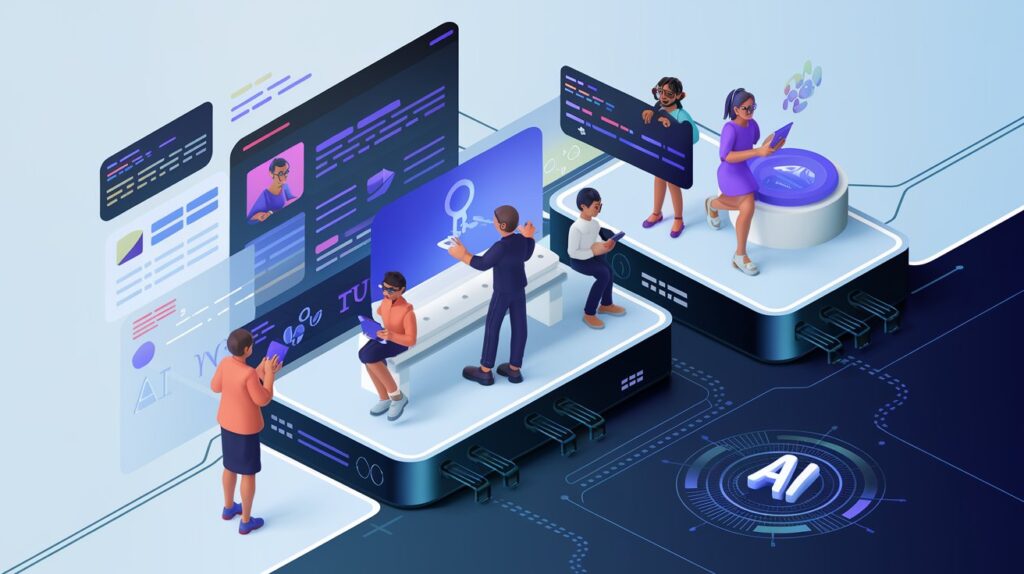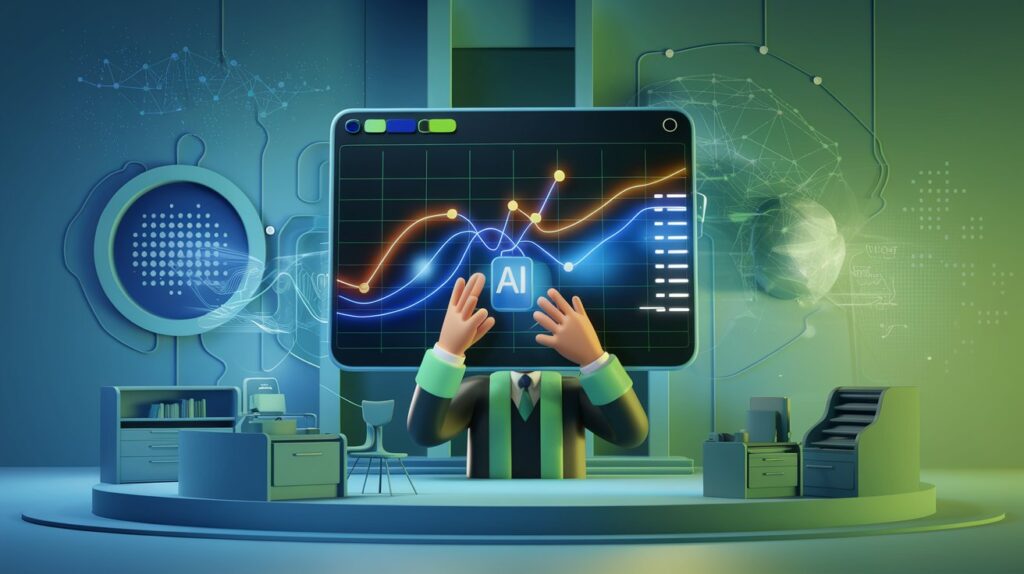Introduction
Generative AI is revolutionizing industries—CEOs must understand its power to stay competitive. Unlike traditional AI, which focuses on analyzing and interpreting existing data, generative AI produces entirely new content, solutions, and designs based on the input it receives. From creating original artwork to drafting reports, generative AI is transforming the way businesses operate. This guide will explore the key aspects of generative AI that every CEO should be aware of, from strategic advantages to challenges and ethical considerations.
Table of Contents
What is Generative AI?
Generative AI is a subset of artificial intelligence focused on generating new data, content, or designs from learned patterns. It uses models like GPT (Generative Pretrained Transformer) and GANs (Generative Adversarial Networks) to analyze massive datasets and create original outputs—whether it’s text, images, audio, or even computer code.
Examples of Generative AI in Business:
- Content Creation: Automatically drafting blog posts, emails, or reports.
- Design Automation: Creating new product designs, logos, or marketing materials.
- Product Innovation: Suggesting new product ideas based on market trends.
- Customer Interaction Tools: Enhancing chatbots with more human-like, personalized conversations.
Strategic Advantages of Generative AI for CEOs
1. Innovation and Product Development
Generative AI accelerates innovation by automating design processes, allowing businesses to iterate faster and test new concepts. For example, Nike has used AI to optimize product designs, and Tesla leverages AI to improve its self-driving algorithms. These companies can bring new products to market faster by using AI to explore countless design variations and find optimal solutions.
2. Operational Efficiency
AI streamlines repetitive tasks like generating reports, marketing content, and processing large datasets. This automation can result in significant cost savings and productivity improvements. For example, AI tools like Jasper can draft entire marketing campaigns within minutes, freeing up human teams to focus on higher-level strategic tasks.
3. Personalization at Scale
Generative AI offers unparalleled personalization by creating content tailored to individual customers. Businesses can offer hyper-targeted product recommendations, marketing messages, or even personalized video content. Retailers like Amazon are already using AI to enhance customer experiences by offering real-time, personalized product suggestions.
4. Scalability and Speed
Generative AI enables businesses to scale operations quickly, particularly in content-heavy industries. For example, marketing teams that need to produce hundreds of unique ads for different audiences can use AI to generate this content in seconds. This ability to scale without compromising quality is crucial for staying competitive in fast-paced markets.
Challenges and Risks CEOs Should Know

1. Data Privacy and Security
Generative AI heavily relies on data, which can raise privacy concerns, especially in regulated industries like healthcare and finance. CEOs must ensure compliance with data privacy regulations, such as GDPR, and implement robust security measures to protect sensitive information.
2. Ethical Concerns
Bias in AI models is a significant ethical challenge. If trained on biased data, generative AI could produce biased or discriminatory outputs, which could harm a company’s reputation. Moreover, AI-generated content can be misused, such as deepfake videos, raising concerns about trust and authenticity. Transparency in AI-driven decisions is crucial to mitigating these risks.
3. Job Displacement
Automation through generative AI could lead to job displacement, particularly in roles focused on repetitive tasks like content creation, data entry, or customer service. While AI boosts productivity, it also necessitates reskilling employees to adapt to new roles, ensuring that the workforce remains relevant and competitive in an AI-driven economy.
4. AI Governance
Implementing AI governance is essential for responsible use. CEOs need to ensure their companies adopt frameworks that define ethical guidelines, usage policies, and transparency measures for AI. This can help manage risks and ensure that AI technology aligns with the company’s values and societal responsibilities.
Practical Tips for CEOs on Implementing Generative AI
- Identify High-Impact Areas: Start by identifying the business functions where generative AI can deliver the most value. For many companies, this includes marketing, product development, and customer service.
- Build AI Expertise: Collaborate with AI experts and develop a skilled team to oversee AI initiatives. Consider training employees on how to integrate AI tools into their workflows effectively.
- Start with Pilot Projects: Instead of overhauling entire departments, CEOs can launch pilot projects to test AI’s potential. This allows the organization to learn and adapt without major risk.
- Balance Automation with Human Creativity: While AI can automate many processes, human oversight is critical to ensuring quality, authenticity, and innovation. AI should complement human creativity, not replace it.
FAQs
- What is generative AI’s main business benefit? Generative AI boosts innovation, operational efficiency, and scalability by automating content creation, product design, and personalized customer interactions.
- Is generative AI difficult to implement? While it can require technical expertise, starting with small pilot projects and partnering with AI experts can ease implementation.
- How does generative AI affect job roles? It may automate certain repetitive tasks but also creates opportunities for higher-level roles, such as AI oversight and strategy development.
- What industries benefit the most from generative AI? Content-heavy industries like marketing, media, retail, and product design see significant benefits, but AI can also enhance healthcare, finance, and manufacturing.
- How does generative AI help with personalization? It allows companies to create highly personalized content, product recommendations, and customer service interactions at scale, improving customer experience.
- What are the ethical concerns with generative AI? Bias in AI models, misuse of AI-generated content, and lack of transparency in decision-making are key ethical challenges.
- Can generative AI help with product innovation? Yes, generative AI can rapidly explore new design ideas and optimize existing products by automating the design process.
- What are the risks of using generative AI? Key risks include data privacy, security breaches, ethical concerns, and potential job displacement due to automation.
- How can companies ensure responsible AI use? By implementing AI governance frameworks, ensuring transparency, and regularly monitoring AI models for bias and ethical issues.
- Is generative AI compliant with data privacy regulations? It can be, but companies need to implement strong data governance practices to ensure compliance with regulations like GDPR.
Conclusion
Generative AI offers transformative opportunities for CEOs looking to innovate, scale, and stay competitive. However, it also comes with risks that must be carefully managed, such as data privacy, ethical concerns, and job displacement. To successfully leverage generative AI, CEOs must adopt a strategic approach, understand both its potential and challenges, and foster a culture of responsible innovation.
Call-to-action: Start exploring how generative AI can reshape your business strategy today by consulting with AI experts and identifying key areas for implementation.


